Related Research Articles

Babur was the founder of the Mughal Empire in the Indian subcontinent. He was a descendant of Timur and Genghis Khan through his father and mother respectively. He was also given the posthumous name of Firdaws Makani.

The Delhi Sultanate or the Sultanate of Delhi was a late medieval empire primarily based in Delhi that stretched over large parts of the Indian subcontinent, for 320 years (1206–1526). Following the invasion of South Asia by the Ghurid dynasty, five dynasties ruled over the Delhi Sultanate sequentially: the Mamluk dynasty (1206–1290), the Khalji dynasty (1290–1320), the Tughlaq dynasty (1320–1414), the Sayyid dynasty (1414–1451), and the Lodi dynasty (1451–1526). It covered large swaths of territory in modern-day India, Pakistan, and Bangladesh as well as some parts of southern Nepal.
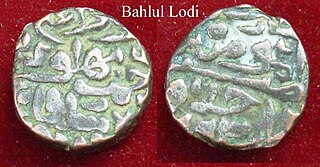
Bahlul Khan Lodi was the chief of the Afghan Lodi tribe. Founder of the Lodi dynasty from the Delhi Sultanate upon the abdication of the last claimant from the previous Sayyid rule. Bahlul became sultan of the dynasty on 19 April 1451.

The Lodi dynasty was a dynasty that ruled the Delhi Sultanate from 1451 to 1526. It was the fifth and final dynasty of the Delhi Sultanate, and was founded by Bahlul Khan Lodi when he replaced the Sayyid dynasty.

Malerkotla is a city and the district headquarters of Malerkotla district in the Indian state of Punjab. It served as the seat of the eponymous princely state during the British Raj. The state acceded to the union of India in 1947 and was merged with other nearby princely states to form the Patiala and East Punjab States Union (PEPSU).

Sultan Husayn Bayqara Mirza was the Timurid ruler of Herat from 1469 until May 4, 1506, with a brief interruption in 1470.

Ghazipur district is a district of Uttar Pradesh state in northern India. The city of Ghazipur is the district headquarters. The district is part of Varanasi Division. The region of Ghazipur is famous mainly for the production of its unique rose-scented Spray called Gulab Jal, and for the tomb of the Governor General of British India, Lord Cornwallis, who died here. His tomb is situated in Western part of City, and is conserved by Archaeological Survey of India.

Khizr Khan was the founder of the Sayyid dynasty, the fourth ruling dynasty of the Delhi sultanate, in northern India soon after the invasion of Timur and the fall of the Tughlaq dynasty. Khizr Khan was Governor of Multan under the Tughlaq ruler, Firuz Shah Tughlaq, and was known to be an able administrator. He did not take up any royal title due to fear of invasion by Amir Timur and contended himself with the titles of Rayat-i-Ala and Masnad-i-Aali or. During his reign, coins were continued to be struck in the name of previous Tughlaq rulers. After his death on 20 May 1421, he was succeeded by his son Mubarak Khan, who took the title of Muizz-ud-Din Mubarak Shah.

The Malwa Sultanate was a late medieval kingdom in the Malwa region, covering the present day Indian states of Madhya Pradesh and south-eastern Rajasthan from 1401 to 1562. It was founded by Dilawar Khan, who following Timur's invasion and the disintegration of the Delhi Sultanate, in 1401, made Malwa an independent realm.

The Jaunpur Sultanate was a late medieval Indian Muslim state which ruled over much of what is now the states of Uttar Pradesh and Bihar between 1394 and 1494. It was founded in 1394 by Khwajah-i-Jahan Malik Sarwar, an eunuch slave and former wazir of Sultan Nasiruddin Muhammad Shah IV Tughluq, amidst the disintegration of the Delhi Sultanate's Tughlaq dynasty. Centred in Jaunpur, the Sultanate extended authority over a large part of the Ganges-Yamuna Doab. It reached its greatest height under the rule of Sultan Ibrahim Shah, who also vastly contributed to the development of Islamic education in the Sultanate. In 1494, Sultan Hussain Khan was defeated by the forces of the Afghan ruler Bahlul Lodi, Sultan of the Lodi dynasty of the Delhi Sultanate at Benares at which point Hussain fled to Kahalgaon in modern-day Bihar where the Sultan of Bengal assigned him a pargana. Here he was allowed to mint his own coins and was promised help from Bengal in recovering his kingdom. He died in 1505.
The Pathans of Punjab, also called Punjabi Pathans or Pathans, are descendants of Pashtun settlers, an Eastern Iranian ethnic group, in the Punjab region of Pakistan and India. They were originally from the Pashtunistan region of Afghanistan and Pakistan bordering the Punjab region. Most of these Pashtun communities are scattered throughout the Punjab and have over time assimilated and integrated into the Punjabi society and culture.
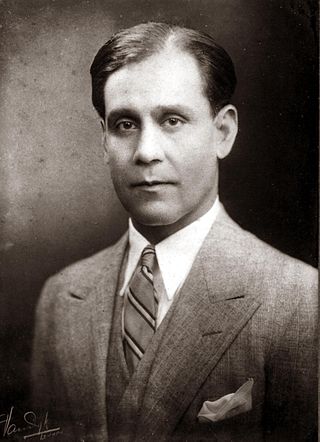
Hamidullah Khan was the last ruling Nawab of the princely salute state of Bhopal. He ruled from 1926 when his mother, Begum Kaikhusrau Jahan Begum, abdicated in his favor, until 1949 and held the honorific title until his death in 1960. A delegate to the Round Table Conference in London, he served as Chancellor of the Chamber of Princes from 1944 to 1947, when India became independent.
The town of Sautbad, known as Sheikhupur, is about 4 km from the centre of Badaun city across the river Saut, Uttar Pradesh, India and comes under Badaun Metro Area. It is 1 km from Budaun and will be part of the city in one year. The latitude and longitude of Sheikhupur are 28.1 (N) and 79.7' respectively.
Sahiba Mahal was the second wife of Mughal emperor Muhammad Shah.
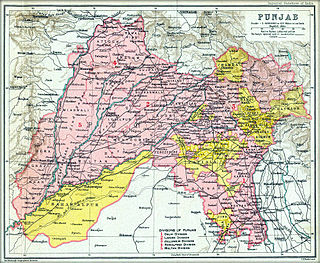
The State of Malerkotla or Maler Kotla was established by Maharaja of Parmar Rajputs, is a princely state in the Punjab region since the era of British India. Which was taken over by Sarwani and Lodi Pashtun dynasty from Afghanistan, and named Malerkotla as capital.
Kandahari Begum was the first wife of the Mughal emperor Shah Jahan and the mother of his first child, Princess Parhez Banu Begum.
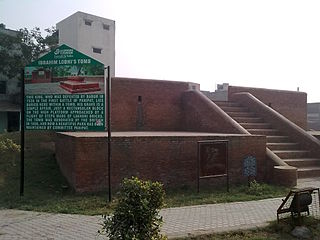
The Tomb of Ibrahim Lodi in Panipat is the tomb of Ibrahim Lodi, Sultan of the Lodi dynasty.
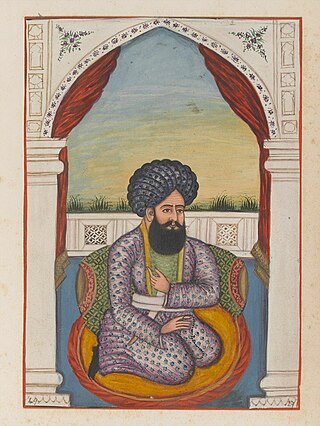
Sultan Mohammad Khan, also known as Ghazi Sardar Sultan Mohammad Talaei, and known by his epithet, Sultan Mohammad Khan the Golden was an Afghan chief minister and regent. He was a powerful brother of Emir Dost Mohammad Khan, the eventual ruler of Afghanistan who seized control of Kabul from him. Prior to and during the reign of Dost Mohammad Khan, Sultan Muhammad Khan Telai was chief minister and governor of various regions of Afghanistan, including Kabul, Peshawar and Kohat. He was the first of the Musahiban, a Mohammadzai dynasty that began with him and ruled Afghanistan for more than 150 years, in various forms such as emir, king or president from 1823 to 1978.
References
- ↑ "Study of the Pathan Communities in four States of India". Khyber. Archived from the original on 14 May 2008. Retrieved 7 June 2007.
{{cite web}}: CS1 maint: unfit URL (link) - 1 2 3 "Hazrat Baba Haider Sheikh & Malerkotle Wale Pir". Sufi Post || The Relationship between Spirituality, Religion, and Culture. Retrieved 2022-04-06.